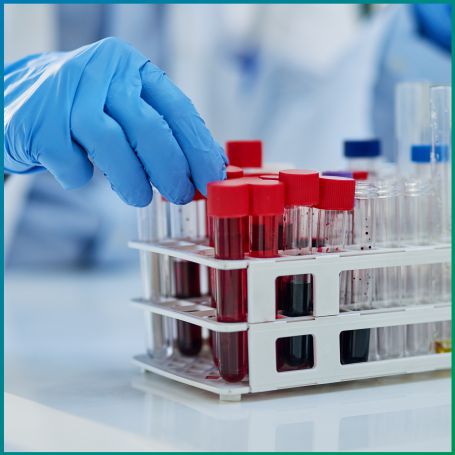
The C/S Fungal Pus Test stands for Culture and Sensitivity of Fungal Infections in Pus Samples.

The C/S Fungal Pus Test is a crucial diagnostic tool used to identify fungal infections that are present in pus samples taken from infected wounds, abscesses, or other body sites. This test involves culturing a sample of pus to detect the presence of fungi, followed by sensitivity testing to determine which antifungal treatments are most effective. Fungal infections can often be challenging to diagnose as they share symptoms with bacterial infections and can be overlooked or misdiagnosed. The C/S Fungal Pus Test not only confirms the presence of fungal pathogens but also provides valuable information on how best to treat the infection.
1] Accurate Diagnosis of Fungal Infections - Fungal infections, while less common than bacterial infections, are becoming more prevalent, especially in immunocompromised individuals (e.g., those with HIV/AIDS, cancer patients, or those on immunosuppressive therapy). These infections often present with symptoms similar to bacterial infections, such as redness, swelling, pain, or discharge. The C/S Fungal Pus Test is essential for differentiating fungal infections from bacterial ones and for ensuring the correct diagnosis. 2] Detecting Deep Tissue Infections - In some cases, fungal infections can affect deeper tissues, including bones, organs, or internal body cavities. Infections like candidiasis or aspergillosis can cause pus to accumulate in abscesses or infected wounds. The C/S Fungal Pus Test helps identify fungal infections in these deeper tissues, guiding appropriate treatment to prevent further complications. 3] Guiding Effective Treatment - The sensitivity portion of the C/S Fungal Pus Test provides critical information about which antifungal agents are most effective against the identified pathogen. Fungal infections often require specific antifungal treatments, and knowing the right drug can significantly speed up recovery. This is especially important as some fungal species, like Candida or Aspergillus, may develop resistance to certain antifungal drugs over time. 4] Prevention of Misdiagnosis and Inappropriate Treatment - Fungal infections are sometimes misdiagnosed as bacterial infections, leading to the unnecessary use of antibiotics. The C/S Fungal Pus Test helps prevent this by confirming whether a fungal pathogen is present and, if so, which specific species is causing the infection. Accurate diagnosis reduces the likelihood of inappropriate treatment with antibiotics, which can worsen the situation, particularly in cases of mixed infections. 5] Tracking Chronic Fungal Infections - For patients with recurring or chronic fungal infections, such as those with chronic candidiasis or dermatophyte infections, the C/S Fungal Pus Test can help track the progression of the infection, detect drug resistance, and adjust treatment regimens accordingly.
1] Sample Collection - The first step in the C/S Fungal Pus Test is the collection of a pus sample from the infected site. This may involve aspirating fluid from an abscess, wound, or other source using a sterile needle or swab. The sample is collected under sterile conditions to prevent contamination and ensure the accuracy of the test. 2] Culturing the Sample - The collected pus sample is transported to a microbiological laboratory, where it is cultured in a nutrient-rich medium that encourages the growth of fungi. The incubation process typically takes between 48 to 72 hours, during which time any fungi present in the sample will multiply and form visible colonies. 3] Identification of the Fungi - Once the fungi have grown, they are identified based on their microscopic appearance, morphology, and other biochemical properties. Common fungi identified through the C/S Fungal Pus Test include Candida albicans, Aspergillus species, and Cryptococcus neoformans. The identification process helps to pinpoint the exact type of fungal infection and guide treatment decisions. 4] Sensitivity Testing - After the fungus has been identified, sensitivity testing is performed to determine which antifungal medications are most effective. The fungi are exposed to a range of antifungal drugs, and the test measures how well the drugs inhibit their growth. This allows the healthcare provider to prescribe the most effective treatment, minimizing the risk of resistance and ensuring faster recovery. 5] Reporting Results - Once the test is complete, the laboratory will provide a report detailing the type of fungus identified, its sensitivity to various antifungal drugs, and any recommendations for treatment. The results are typically available within 48 to 72 hours after the sample is collected.
Choosing best pathology lab test in Pune for the C/S Fungal Pus Test ensures accurate, reliable, and timely results for diagnosing fungal infections in pus samples. With advanced laboratory facilities and cutting-edge microbiological techniques, Diagnopein specializes in isolating and identifying a wide range of fungal pathogens, including Candida, Aspergillus, and Cryptococcus. Their expert team provides comprehensive sensitivity testing to guide the selection of the most effective antifungal treatments, ensuring the best possible outcomes for patients. Diagnopein’s commitment to precision, rapid turnaround times, and high-quality customer service makes it the trusted choice for healthcare providers seeking reliable fungal infection diagnostics and tailored treatment solutions.
1. Culture Method
2. Sample
3. Colony Count
4. Organism(s) Isolated
5. Culture Report: Culture yields growth of
6. Culture isolated after 7 days :
7. Culture isolated after 14 days:
8. Culture isolated after 21 days:
9. Ampicillin
10. Amikacin
11. Amoxicillin clavulanate
12. cefoperazon+sulbactam
13. Cefuroxime
14. Cefepime
15. Cefotaxime
16. Ciprofloxacin
17. Ertapenem
18. Gentamicin
19. Imipenem
20. Meropenem
21. Norfloxacin
22. Nitrofurantoin
23. Piperacillin-tazobactam
24. Trimethoprim-Sulfamethoxazole (Cotrimoxazole)
No, the test is not painful. It involves collecting a pus sample using a sterile swab or needle, which is generally a quick and minimally uncomfortable procedure.
The test can identify a variety of fungal infections, including candidiasis (Candida), aspergillosis (Aspergillus), cryptococcosis (Cryptococcus), and dermatophyte infections.
It is performed when a fungal infection is suspected in a pus sample. The test helps identify the type of fungus causing the infection and guides treatment with the most effective antifungal medication.
Sensitivity testing helps determine which antifungal drugs will be most effective against the identified pathogen, ensuring targeted treatment and reducing the risk of drug resistance.